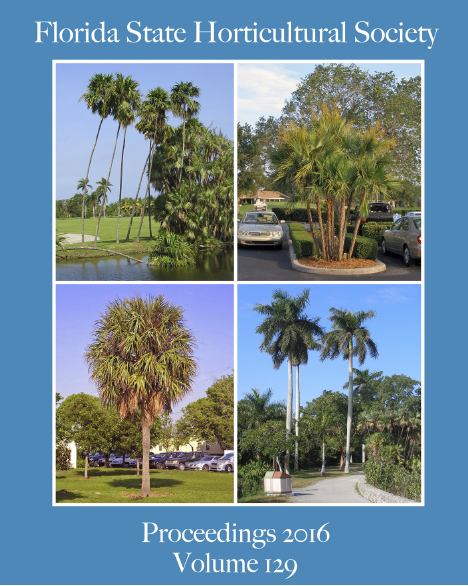Postharvest Storage Temperature and Coating Effects on Fruit Quality of Red-fleshed Pitaya (Hylocereus costarricenses)
Abstract
Pitaya (dragon fruit) is a climbing cactus cultivated for its unique fruit. In Florida, red-fleshed pitaya is grown com-mercially and the market is expanding. Two tests were conducted to evaluate 1) optimum storage temperature and 2) effect of coating. Pitaya (‘Lisa’) were harvested in November 2015 in Homestead, FL, and samples were transported in a refrigerated truck overnight to the Postharvest Horticulture Laboratory at the University of Florida, Institute of Food and Agricultural Sciences, in Gainesville. The next day fruit were sorted for uniformity of size and quality. For study 1, fruit were stored in shipping cartons at 1 °C or at 4 °C. After 10 and 20 days of storage, five fruit were transferred to 20 °C for 24 hours to allow for development of any chilling injury symptoms. For study 2, fruit were dipped in coating SF (Sta-Fresh 2981, vegetable oil-based) or coating EF (Endura-Fresh 6100, carnauba-based) and air-dried prior to storage at 7 °C for 20 days. Five fruit were evaluated every 5 days. Pitaya stored at 4 °C exhibited less weight loss and better overall quality for dryness, percentage of yellow spot, and appearance. Pitaya stored at the lower temperature (1 °C) had significantly less peel color changes over the storage period; mild chilling injury was observed during storage. Visual quality of fruit from study 2 became unacceptable between days 10 and 15 of storage, where overall appearance rating was < 3. Pitaya coated with coating EF had a significantly lower percentage of weight loss than coating SF or untreated fruit during storage.

